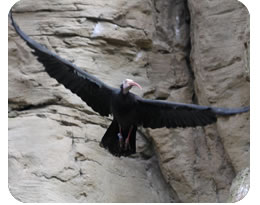
Waldrapp Ibis
Íbis mhaol tuaisceartachCeratotherium simum simum
Habitat:Morocco, Turkey and Syria – cliffs, coastal regions
IUCN status Critically endangered
Habitat Morocco, Turkey and Syria – cliffs,
coastal regions
Diet Carnivore – small mammals, lizards, insects,
birds, mammals, beetles, snails,
worms, scorpion and other invertebrates
Wide use of DDT pesticide in the 1950s decimated the Waldrapp or
northern bald ibis populations in Europe, North Africa and the Middle
East. There may be less than 500 left in the wild and the species is
part of a European captive breeding programme. Parents build a rough
nest of twigs lined with grass and share care of the young, which
acquire a full head of feathers before leaving the nest after around 50
days.
Did you know?
Waldrapp ibis were revered in Egypt and known as crested ibis or crested
akhbirds. Their image appears in ancient Egyptian hieroglyphs and tomb
art.




Stay Up to Date With Whats Happening